When Rohingya poet and community youth leader Asma Nayim Ullah walks into Meeras Pavilion, she doesn’t just see an artwork. She sees a reclaiming of culture, craft and story.
“In the pavilion, we're hoping to showcase who the Rohingya people really are. We're not just refugees. And whatever the media says,” she said.
The large-scale temporary installation in front of Customs House in Circular Quay is the result of a 3-year collaboration between Rohingya and the wider creative community.
More than 150 people have contributed to its conception and making, weaving bamboo, rope and steel into an immersive structure that invites you to step into the Rohingya story.
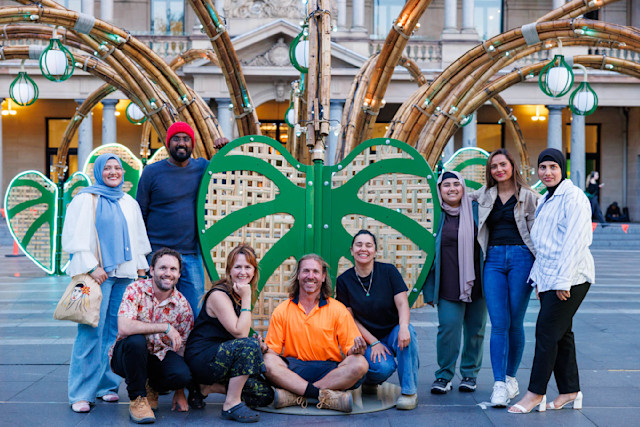
Behind the project is Creative Advocacy Partnership (CAP), a collective of advocates, artists, designers and curators who use creativity to shift narratives and build connection.
“Our collective is really based on the partnership between Rohingya and non-Rohingya collaborators. It's about sharing stories and exchanging craft practices where it's not just us coming in as teachers of a craft or facilitators,” CAP’s Tasman Munro said.
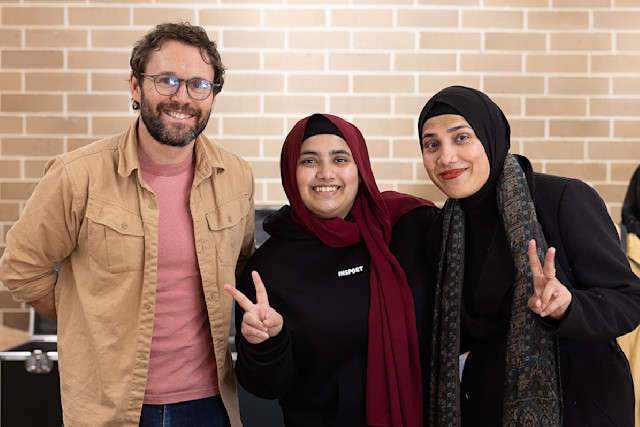
Conversations and cultural exchanges took place in Sydney, as well as refugee camps in Bangladesh and Malaysia.
“The focus of our advocacy is around story work. We’re trying to shift and build richer stories about the Rohingya with the intention to try to build care and connection,” said Munro, who led the co-design element of the project.
Creativity as a powerful tool for advocacy
The Rohingya has been described by the UN as one of the most persecuted minorities in the world, with little access to basic rights and services including freedom of movement, healthcare, state education and jobs. Since 2017, more than 1.2 million people have been displaced or fled extreme violence in Myanmar.
But Meeras is about celebrating Rohingya creativity, culture and existence beyond narratives of victimhood and statelessness.
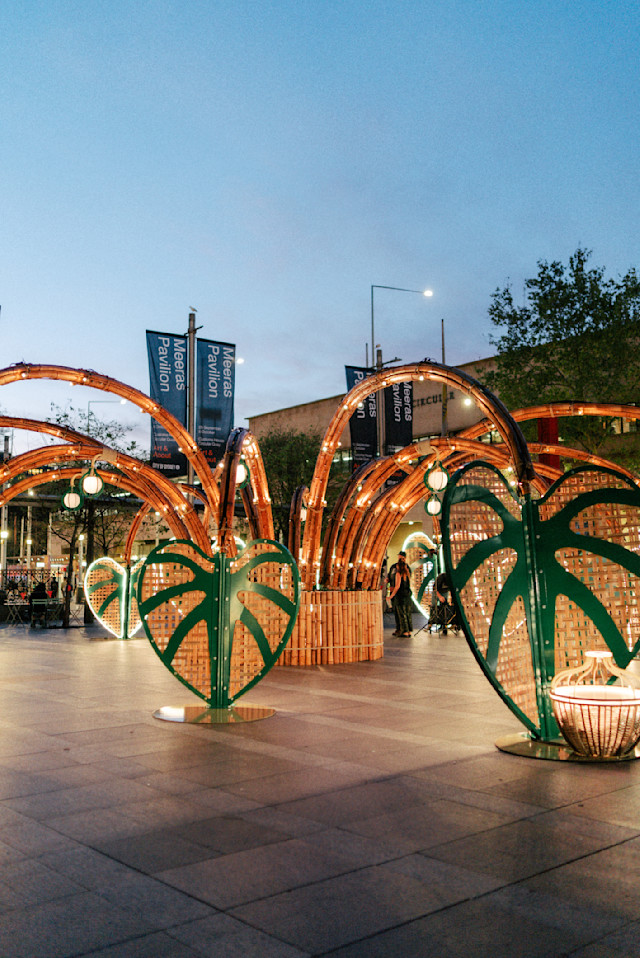
Made from bamboo woven with steel and integrated with high-tech light and sound, the pavilion features 16 archways forming a canopy over an immersive space. At the end of each archway is a giant taro leaf – the symbol of Rohingya advocacy.
The taro symbol emerged during a conversation in a refugee camp in Malaysia.
“One of the Rohingya community members used this proverb to describe the experience: ‘Hoñsu fathar faaní’. It means the way water rolls off a taro leaf, doesn’t leave a mark. No matter where they live, they’re always floating above land, never able to put roots down, to make a mark, get documents and build a life,” Munro said.
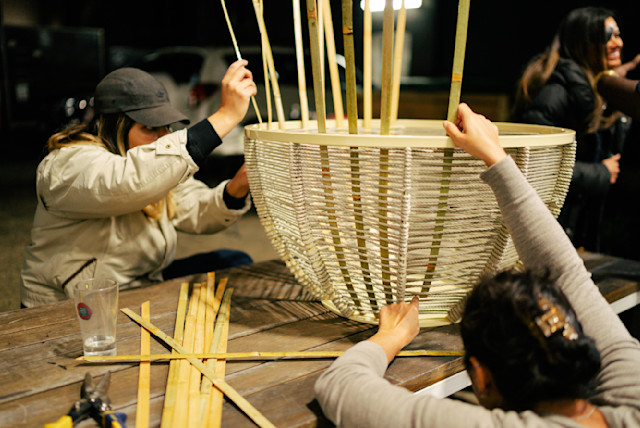
Building community not just art
The build of the artwork was led by creative agencies Amigo & Amigo, and Lucid Space Design.
Since 2024, Rohingya and Australian artists and allies also gathered in Lakemba and Marrickville to collaboratively make parts of the pavilion, including weaving taro leaves and water jugs from bamboo and rope.
The workshops were essential to the process. They created precious space for the Rohingya community to connect, practice culture and share stories.
“What I really like about the artists at CAP is that they gave us a purpose to re-practice all the things we have lost along the way because at the end of the day we're trying to survive. And sometimes when we try to survive, we don't do the things that we used to love to do,” Asma said.
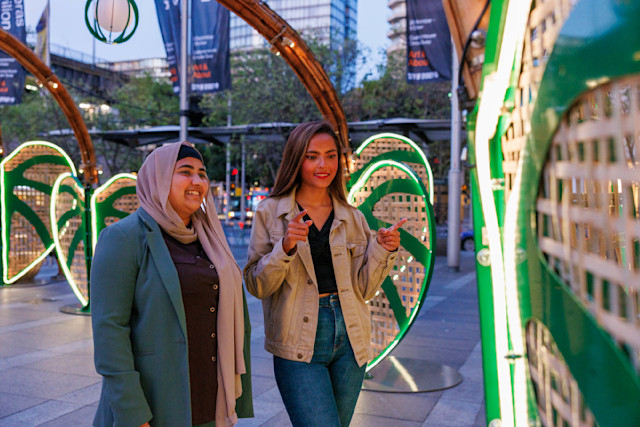
An invitation to Sydney
Now Sydney’s Rohingya community invites you to meet them in the space and discover their stories and culture through cultural programs, including panel discussions, pop-up performances, workshops, a photography exhibition and a documentary.
“You'll see a bit of what our people are really like when we are having a wedding, for example, or, you know, we’re getting ready for Eid,” Asma said.
“We'll show our generosity. That's one of the things that stands out to me in our culture – the generosity. We welcome everyone like our lives depend on it.”
Meeras Pavilion is at Customs House Square, Circular Quay from Thursday 25 September to Monday 6 October. Find out more about the project and the free programs.
The project is presented by the City of Sydney as part of Art & About and produced by Creative Advocacy Partnership and Amigo & Amigo in collaboration with Sydney’s Rohingya communities and advocacy partners.
Partners involved include – Médecins Sans Frontières, Australian Rohingya Women’s Development Organisation, Australian Global Health Alliance, Refugee Council of Australia, Asylum Seeker Resource Centre, Amnesty International,Event Engineering, Lucid Space Studio, Rohingyatographer, Rohingya Maìyafuìnor Collaborative Network, Hampden Park Public School and OTIS.